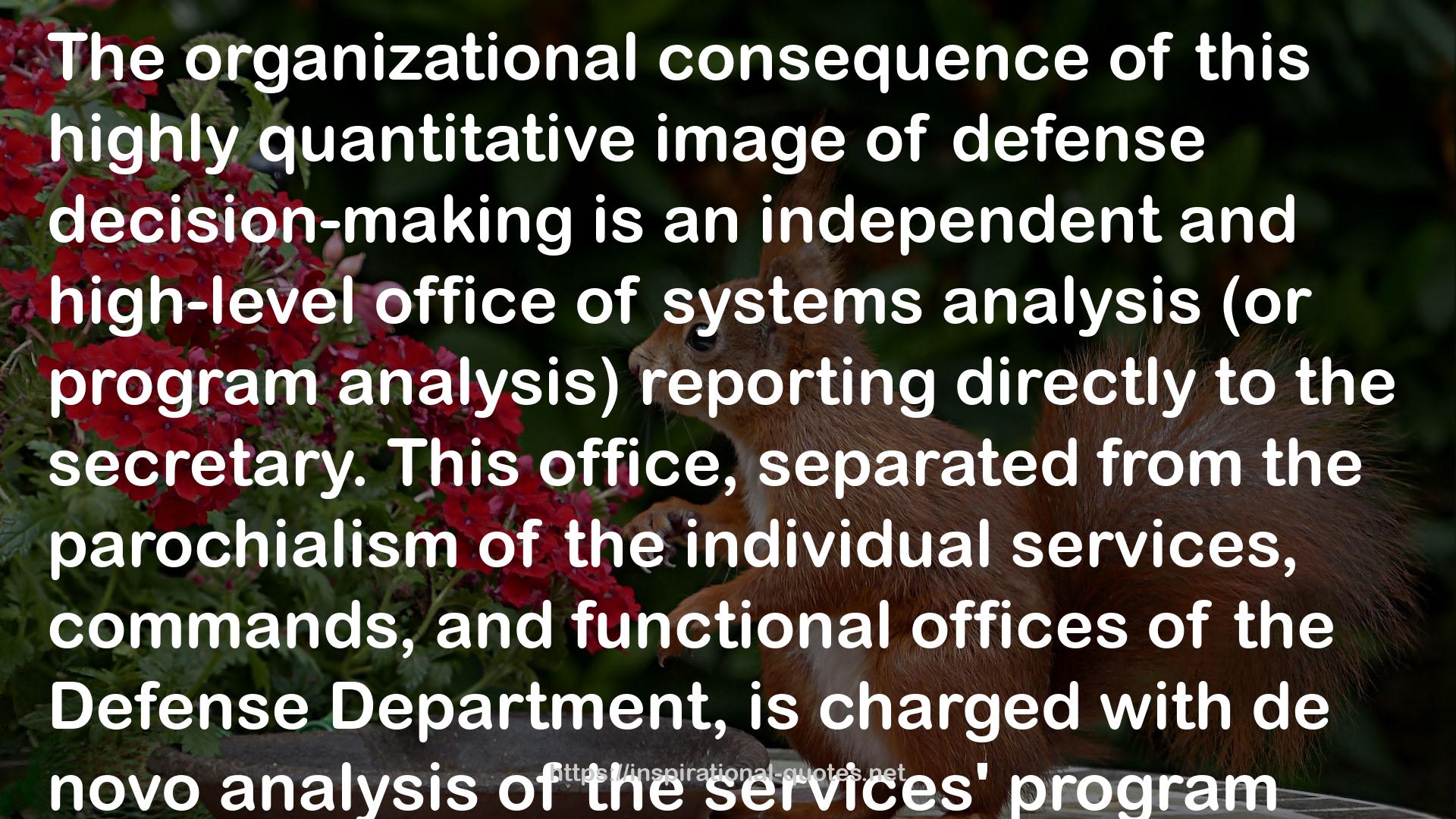" The organizational consequence of this highly quantitative image of defense decision-making is an independent and high-level office of systems analysis (or program analysis) reporting directly to the secretary. This office, separated from the parochialism of the individual services, commands, and functional offices of the Defense Department, is charged with de novo analysis of the services' program proposals (and, indeed, with the generation of alternative programs) to assess the relative merits of different potential uses of the same dollars. Its activities culminate in the secretary's decision on a single coherent set of numerically defined programs.
This model imposes a requirement for close interaction between the secretary of defense and the principal program analyst. A suitable person for the job is difficult to obtain without granting him or her direct access to the secretary. This model, therefore, requires that the chief program analyst report directly to the secretary and it inevitably limits the program and budget role of the other chief officials of the OSD, especially the principal policy adviser.
The model leaves unresolved how the guidance for the analysis process is to be developed and even how choices are to be made. Analysis is not always made rigorous and objective simply by making it quantitative, and not everything relevant can be quantified. At its extreme, it can degenerate into a system in which objectives become important because they can be quantified, rather than quantification being important because it can illuminate objectives. "
― Walter Slocombe
Image for Quotes

